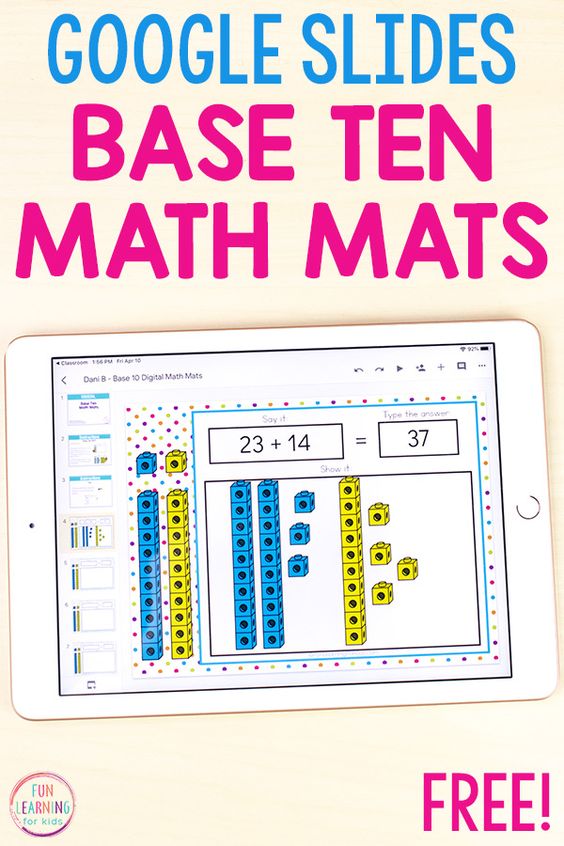Introduction:
Math can be an intimidating subject for many elementary students, but utilizing engaging and interactive tools can help create a more enjoyable and effective learning experience. One such tool that can be easily accessed is Google Slides. Teachers can create interactive math presentations that foster a love of learning and problem-solving in their students. Here, we list 18 free and fun interactive Google Slides specifically designed for elementary math students.
1. “Addition Adventures” – This interactive Google Slide focuses on addition skills, incorporating colorful visuals, engaging exercises, and progress tracking.
2. “Subtraction Station” – With this slide, students build confidence in subtracting through a series of challenges that increase in difficulty as the levels advance.
3. “Jump into Fractions” – Students learn to identify basic fractions using images, puzzles, and matching games.
4. “Fun with Patterns” – This engaging presentation helps learners develop skills in recognizing patterns and understanding the concept of sequencing.
5. “Match the Shapes” – Introduce young learners to different shapes by having them match them using drag-and-drop features.
6. “Telling Time Tales” – Explore the concept of telling time with this interactive slide featuring analog clocks at varying levels of difficulty.
7. “Division Den” – Challenges students to conquer basic division problems through practice activities and mini-games that promote mastery.
8. “Multiplication Mountain” – A fun slide that encourages students to climb the multiplication mountain by completing various problem-solving activities that increase in difficulty as they progress.
9. “Money Madness” – A slide dedicated to teaching the value of money, counting coins, and combining different denominations efficiently.
10. “Measurement Playground” – Children learn various ways of measuring lengths, weights, volumes, and temperatures through fun examples and quizzes.
11. “Geometry Gems” – Enhance geometry knowledge by using interactive activities on shapes, angles, and lines.
12. “Place Value Pirates” – A slide that helps students understand place values and how they impact numbers through problem-solving and critical thinking challenges.
13. “Number Comparison Safari” – Teach learners to compare numbers (greater than, less than, or equal to) using fun animal-themed illustrations and problems.
14. “Decimals Delight” – Allow students to explore decimals through engaging visuals, games, and questions that range in difficulty.
15. “Perimeter Protectors” – A unique slide that offers hands-on learning opportunities about calculating perimeters of various objects.
16. “Fun with Graphs” – Students learn about different types of graphs such as bar graphs, pie charts, and line graphs by creating examples in an engaging environment.
17. “Fraction Forest” – Embark on a journey through the Fraction Forest where students can uncover fraction concepts, engage in interactive games, and complete matching activities.
18. “Order of Operations Olympics” – This slide teaches young learners the order of operations (PEMDAS) through exciting events in an Olympic setting.
Conclusion:
These 18 free and fun interactive Google Slides for elementary math students not only offer a diverse range of topics but also motivate students to develop a passion for learning math. Grab these resources for your classroom today and make math lessons intriguing and enjoyable for your curious young minds!











